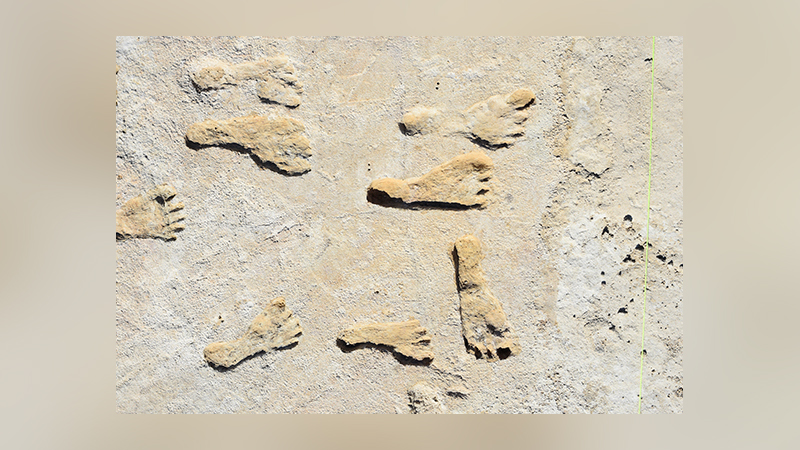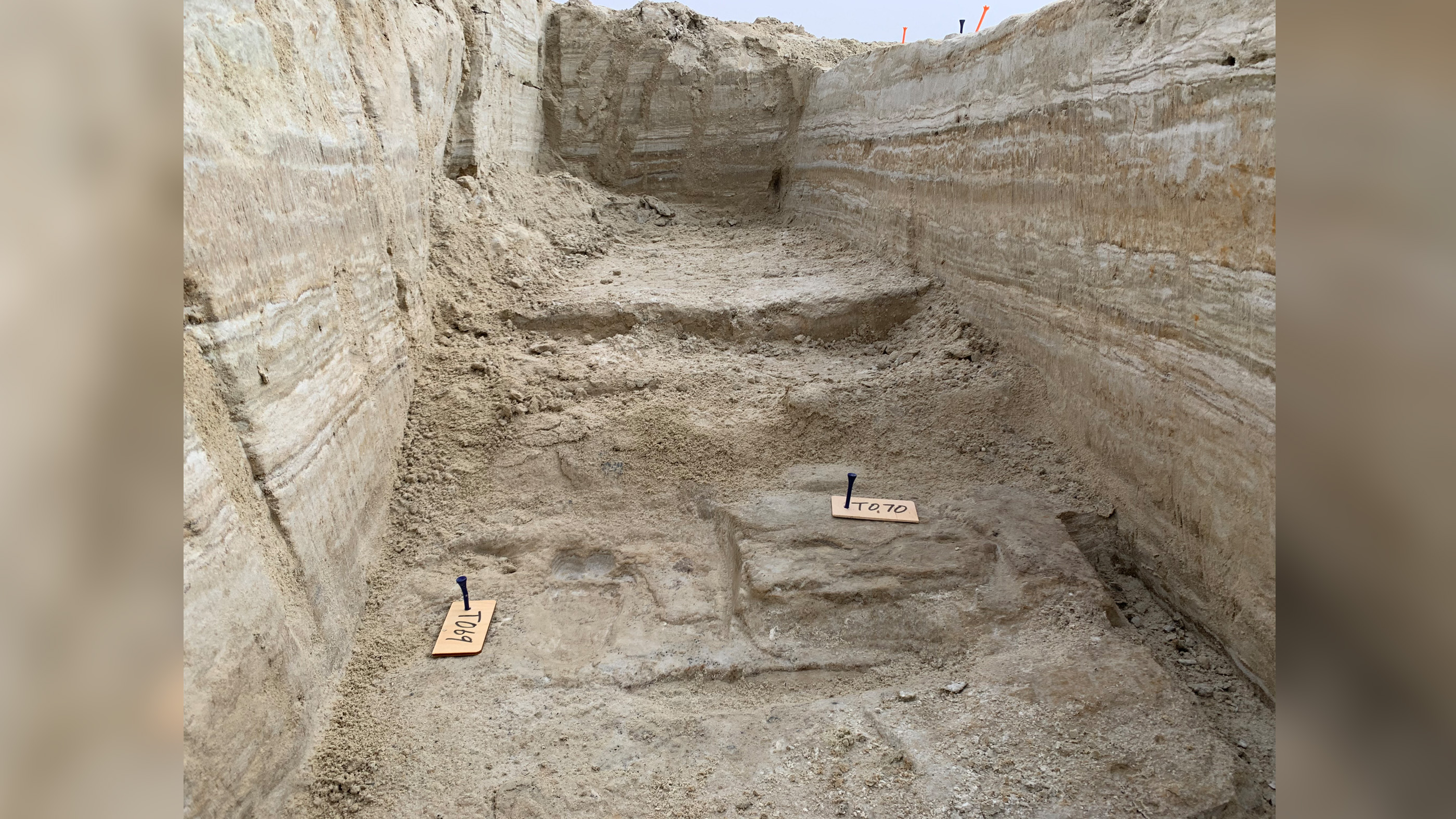Fossilized footprints in New Mexico are earliest 'unequivocal evidence' of people in the Americas

Fossilized human footprints found in New Mexico reveal that people dwelled in the Americas during the last ice age's peak — a discovery that researchers suggest is conclusive proof of early migration to the New World, a new study finds.
Although the newfound footprints are not the oldest evidence of humans' arrival in the Americas, they may be the first unequivocal proof that people were there during the last ice age, scientists noted.
The arrival of the first people in the Americas was a key step in humanity's expansion across the planet, but the precise timing of this milestone remains hotly contested. Based on stone tools dating back roughly 13,000 years, archaeologists had long suggested that people from the prehistoric culture known as the Clovis were the first to migrate to the Americas.
Related: In photos: The Clovis culture & stone tools
However, researchers recently unearthed a great deal of evidence of pre-Clovis artifacts. For example, last year scientists revealed that stone artifacts discovered in Chiquihuite Cave in central Mexico were at least 26,500 years old; computer models found the cave's location was so far inland in the Americas, and thus so distant from the Old World from which human migrants arrived, that it suggested that humans might have first entered the New World as early as 33,000 years ago.
Still, the earliest archaeological evidence of human settlement of the Americas remains highly controversial. Even the scientists who excavated Chiquihuite Cave suggested that others might argue that the stone objects discovered there are not of human origin but are merely "geofacts," or normal rocks that look artificial.
Now, 60 footprints embedded in an ancient lake bed in what is now White Sands National Park in south central New Mexico are strong evidence that humans occupied the New World between about 21,000 and 23,000 years ago.
Sign up for the Live Science daily newsletter now
Get the world’s most fascinating discoveries delivered straight to your inbox.
These prints were made during the height of the Last Glacial Maximum, the span between about 19,000 and 26,500 years ago when the ice age was at its peak and glaciers covered roughly one-third of Earth's land.
"The White Sands footprints provide unequivocal evidence of early occupation," study lead author Matthew Bennett, an ichnologist at Bournemouth University in England, told Live Science. "There are several proposed early sites, such as Chiquihuite, but they are all disputed by someone. The footprints are the first unequivocal data point in this debate." (Ichnologists study trace fossils, such as fossilized footprints and tracks.)

The prints were made on what once was the edge of a wetland, a "bit wetter than today but still quite arid," Bennett said. Other footprints found in the area include those of mammoths, ground sloths, canines, felines, bovines and camels.
By using carbon-dating methods on seeds found in sediments within the prints, the researchers figured out the prints' age. "It is not the oldest site, but it is a site which has unequivocal evidence, and that is its importance," Bennett said.
Similar to fossilized human footprints that the researchers previously analyzed in Namibia, the newly discovered footprints were made by flatter-footed individuals than often seen in modern human footprints; they are similar to those commonly reported for habitually barefooted people.

Many of these newfound footprints appear to be from teenagers and children; larger adult footprints are less prevalent. One possible explanation for this, the researchers suggested, is a division of labor in which adults were involved in skilled tasks, while teenagers were delegated fetching and carrying duties and children tagged along with the teenagers.
These findings reveal that people occupied southwestern North America for at least 2,000 years during the Last Glacial Maximum. "Also, we believe they were there [for] much longer than the two millennia we are currently able to say," Bennett said.
The prints were made before advancing glaciers closed off the ice-free corridor that once connected the landmasses of Asia and North America, as well as a Pacific coastal route through which people might have boated their way from the Old World — considered to be Africa, Europe and Asia — to the New World. These new findings suggest that people made their way to the Americas millennia before the Last Glacial Maximum prevented migration via either method, "plenty of time for people to have headed south by whatever route they chose," Bennett said.
The discovery that humans may have occupied the Americas at such an early date suggests that if there were ancient hunters who pursued mammoths and other megafauna in the New World, they did so in a sustainable manner, at least initially, the researchers said. If they hadn't, the oversize creatures would likely have died out sooner. On the other hand, it also raises the possibility that humans ultimately may have played a role in the extinctions of megafauna previously thought to predate humans' arrival in the Americas, the researchers added.
Such footprints can also help humans today feel some connection to those in the past: "I think footprints are the most amazing way to connect to the past," Bennett told Live Science. "Everyone has left a footprint on the beach at some time and can connect to the past."
The pandemic stopped work at this site after January 2020. The researchers hope to restart their research there in January 2022 "to try to say more about the people that left the tracks," Bennett said.
The scientists detailed their findings in the Sept. 24 issue of the journal Science.
Originally published on Live Science.










